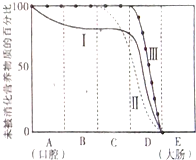American researchers found females are the more talkative sex because of a special “language protein(蛋白质)” in the brain.
The study, conducted by neuroscientists (神经学家)and psychologist from the University of Maryland, concluded that women talked more because they had more of the Foxp2 protein. The research, published in the Journal of Neuroscience, found that higher levels were found among humans that were women but in rats that were males. Their findings came after it was previously claimed that ladies speak about 20,000 words a day – over 13,000 more than men. "This study is one of the first to report a sex difference in the expression of a language-associated protein in humans or animals,” said Prof Margaret McCarthy, who led the study. In their study, the researchers attempted to determine what might make male rats more vocal than their female friends.
They separated four-day-old rats from their mothers and then counted the number of times they cried out in the “ultrasonic range”, the frequencies higher than humans can hear, over five minutes. While both sexes called out hundreds of cries, the males called out twice as often, they found. But when the pups were returned to their mother’s cage, she fussed over her sons first. Tests conducted on the parts of the brain known to be associated with vocalcalls showed the male pups have up to twice as much Foxp2 protein as the females. The researchers then increased the production in the brains of female pups and reduced it in males. This led to the female rats crying out more often and their mothers showing more interest to them. In contrast, males became less “talkative”.
The researchers then tested samples from ten children, aged between three and five, which showed that females had up to 30 per cent more of the Foxp2 protein than males, in a brain area key to language in humans.
“Based on our observations, we assume higher levels of Foxp2 in girls and higher levels of Foxp2 in male rats is an indication that Foxp2 protein levels are associated with the more communicative sex,” said Prof McCarthy.
"Our results imply Foxp2 as a component of the neurobiological basis of sex differences in vocal communication in mammals."
小题1:From the second paragraph, we can learn that ________.
A.women always speak more words than men
B.men and male rats have low levels of language protein
C.women and male rats have similar levels of Foxp2
D.McCarthy isn’t the first to find females more talkative小题2:The underlined phrase “fussed over” in the third paragraph probably means______.
A.paid attention to
B.related to
C.put pressure on
D.counted on小题3:The researchers carried out the experiments on rats in order to _______.
A.test which part of the brain is key to language in rats and humans
B.prove the levels of Foxp2 protein in humans and rats are different
C.determine the reason why female rats are more talkative than male rats
D.discover the association between Foxp2protein and vocal communication小题4:Which of the following can be the best title for the passage ?
A.Tests on humans and rats
B.Why women are the talkative sex
C.Sex differences in Foxp2 protein
D.Foxp2 protein determines oral ability
小题1:D
小题2:A
小题3:D
小题4:B
题目分析:文章主要讲解了美国研究者发现女性比男性更为健谈,因为她们大脑中有一种特别的“语言蛋白质”比男性要多,而在老鼠中,雄性比雌性多。
小题1:细节推断题。从第二自然段Their findings came after it was previously claimed that ladies speak about 20,000 words a day – over 13,000 more than men.可知,McCarthy 所领导的研究并非第一个发现女性比男性是健谈的,故选D
小题2:推断题。从第三自然段But when the pups were returned to their mother’s cage, she fussed over her sons first. 及This led to the female rats crying out more often and their mothers showing more interest to them.可知,动物妈妈更倾向于注意那些Foxp2蛋白质含量更高的她的孩子,故选A.
小题3:推断题。第二自然段最后及最后两个自然段,可知在老鼠上做实验是为了发现Foxp2蛋白质与声音交流的联系。故选D
小题4:主旨题。文章主要美国研究者发现女性比男性更为健谈,其中最重要的原因是女性中Foxp2蛋白质要比男性中多的多,所以本文题目最好是为什么女性是更健谈的,故选B
点评:本文文脉清晰,对女性为何更为健谈进行了解释,把握好这条主线,文章推断题居多,答题中要注意理解作者所讲细节的目的,是来阐述一种什么现象,把握好这几点,再将题目和文章进行对比即可得出正确的答案。

